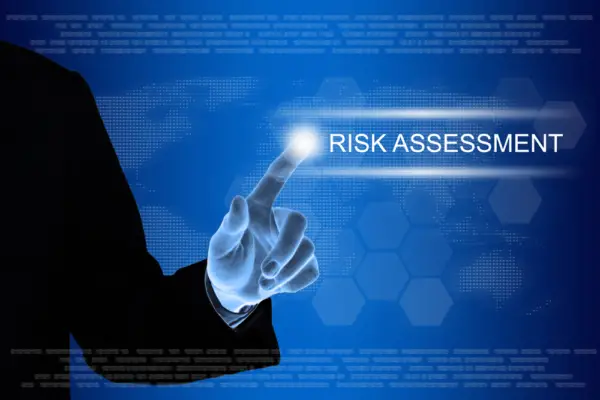Hazard and risk assessment are crucial in understanding potential dangers and ensuring safety in various fields.
Individuals and organizations can plan and reduce risks by identifying hazards, evaluating their probability of occurrence, and assessing their potential consequences.
This article provides an analytical exploration of the definition of hazard and risk assessment. It delves into the importance of conducting thorough risk assessments as part of safety planning processes.
Different approaches to risk assessment are examined to highlight their strengths and limitations.
Additionally, this article emphasizes the significance of incorporating risk assessment into decision-making processes, enabling informed choices that prioritize safety.
Furthermore, real-world examples from diverse fields illustrate how hazard and risk assessments are applied to address specific challenges.
This article aims to improve readers’ comprehension of various industries’ hazard identification, evaluation, and risk mitigation strategies. It takes an objective and detail-oriented approach to promote a safer environment.

Understanding Hazards and Their Potential Impact
Identifying vulnerabilities is a key step in this process. Hazards can come in various forms, such as natural disasters (e.g., earthquakes, floods) or human-made events (e.g., chemical spills, terrorist attacks).
Identifying vulnerabilities helps us pinpoint the areas or systems that are at risk. This enables us to allocate resources and implement measures to reduce potential harm.
For example, buildings and infrastructure can be designed with seismic resilience in mind if a region is prone to earthquakes. Similarly, safety procedures can be implemented to minimize the risk of accidental releases if a chemical plant is located near residential areas.
It is crucial to comprehend hazards and vulnerabilities to conduct a successful risk assessment and create plans to safeguard communities and assets.
The Importance of Risk Assessment in Safety Planning
Significance of conducting a thorough evaluation to identify potential dangers and determine appropriate safety measures cannot be overstated. Risk assessments ensure workplace safety by systematically identifying, analyzing, and prioritizing hazards.
A comprehensive risk assessment process consists of several key elements that contribute to the effectiveness of safety planning. These include hazard identification, which involves recognizing potential sources of harm;
Risk analysis assesses the likelihood and severity of harm, and risk evaluation determines the acceptable risk level. Additionally, control measures are implemented to reduce risks to an acceptable level or eliminate them.
Regular review and monitoring ensure that control measures remain effective over time. Organizations can create safer work environments for their employees by including these elements in their safety planning to proactively manage risks.
| Key Elements | Description |
|---|---|
| Hazard Identification | Recognizing potential sources of harm |
| Risk Analysis | Assessing the likelihood and severity of harm |
| Risk Evaluation | Determining the level of acceptable risk |
| Control Measures | Implementing actions to reduce or eliminate risks |
| Review and Monitoring | Regularly assessing the effectiveness of control measures |
Different Approaches to Risk Assessment
One approach to evaluating potential dangers and determining appropriate safety measures involves systematically analyzing potential sources of harm, the likelihood and severity of harm, and the acceptable risk level.
This can be done through different approaches to risk assessment, including quantitative and qualitative methods.
Quantitative risk assessment uses numerical values to assess risks based on probability and consequences. It utilizes mathematical models, statistical data, and historical records to estimate an event’s likelihood and potential impact.
This approach provides a more objective evaluation of risks by assigning numerical values to various parameters.
On the other hand, qualitative risk assessment focuses on descriptive assessments without quantifying risks numerically. It relies on expert judgment, experience, and subjective evaluations to identify hazards and evaluate their potential impacts.
While it may lack precision compared to quantitative methods, qualitative risk assessment allows for a broader consideration of factors such as human behavior or social aspects that cannot easily be quantified.
Another approach is probabilistic risk assessment (PRA), which combines elements from both quantitative and qualitative methods. PRA uses probabilistic techniques to quantify uncertainties in risk estimation while considering experts’ subjective judgments.
By incorporating objective data and expert opinions, PRA provides a comprehensive evaluation that captures both the quantifiable aspects of risks and the uncertainties associated with them.
Different approaches exist for conducting risk assessments depending on the context and available information. The choice between quantitative or qualitative methods will depend on various factors, such as the nature of hazards being assessed or the resources available for analysis.
Probabilistic risk assessment offers a balanced approach by integrating quantitative analyses and expert judgments to understand risks comprehensively.

Incorporating Risk Assessment into Decision-Making Processes
An essential aspect of effective decision-making involves integrating comprehensive risk analysis, allowing for a thorough understanding of potential hazards and their associated uncertainties.
Incorporating risk assessment techniques into decision-making ensures that all potential risks are identified, analyzed, and evaluated before making a final decision. This helps develop appropriate risk management strategies to mitigate or eliminate these risks.
Risk assessment techniques such as qualitative and quantitative analyses provide valuable insights into the likelihood and consequences of various hazards, enabling decision-makers to make informed choices.
Considering different scenarios and evaluating the potential impacts of each option, decision-makers can prioritize actions that minimize risks while maximizing benefits.
Additionally, incorporating risk assessment into the decision-making process promotes transparency and accountability by ensuring that decisions are based on objective analysis rather than subjective opinions or biases.
Examples of Hazard and Risk Assessment in Various Fields
Hazard and risk assessment examples can be found in various fields, including healthcare, engineering, transportation, and environmental management.
In healthcare, risk assessment is crucial for ensuring patient safety and improving the quality of care. It involves identifying potential hazards and developing mitigation strategies, such as implementing infection control measures or assessing medication risks.
This includes assessing the impact of pollution sources on air and water quality or evaluating the risks associated with hazardous waste disposal.
These fields can proactively identify and manage potential hazards by incorporating risk assessment into decision-making processes, leading to safer environments for individuals and communities alike.
Frequently Asked Questions
Can you provide a step-by-step guide on how to conduct a risk assessment?
Risk assessments involve a systematic process to identify, analyze, and evaluate potential hazards and associated risks.
This approach provides several benefits, such as improved decision-making, enhanced safety measures, and effective allocation of resources to mitigate identified risks.
What are some common misconceptions about hazard identification and risk assessment?
Some common misconceptions about hazard identification and risk assessment include underestimating the importance of training in these processes.
Proper training is essential for accurately identifying hazards and assessing risks to ensure effective safety measures are implemented.
How can risk assessment be used to prioritize safety measures in a workplace?
This helps organizations allocate resources effectively and address the most significant risks first.
Are there any legal requirements or guidelines for conducting risk assessments?
Legal requirements and best practices exist for conducting risk assessments in the workplace. These guidelines ensure employers identify and evaluate potential hazards.
It also determines appropriate control measures and regularly reviews and updates its risk assessment processes to maintain a safe working environment.
Can risk assessment be applied to non-physical hazards, such as cybersecurity threats?
Risk assessment can be applied to non-physical hazards, such as cybersecurity threats.
Organizations can develop risk mitigation strategies by identifying and analyzing cybersecurity vulnerabilities to protect their systems and data from cyber-attacks.

Conclusion
Hazard and risk assessment are crucial components of safety planning in various fields. By understanding hazards and their potential impact, organizations can identify risks and take proactive measures to mitigate them.
Different approaches to risk assessment, such as quantitative and qualitative methods, help evaluate the likelihood and severity of risks. Incorporating risk assessment into decision-making processes ensures that informed choices are made to minimize harm and maximize safety.
Hazard and risk assessment examples can be seen in industries like healthcare, construction, transportation, and environmental management. Assessments of hazards and risks are crucial in ensuring safety and preventing accidents or incidents.

Chris Ekai is a Risk Management expert with over 10 years of experience in the field. He has a Master’s(MSc) degree in Risk Management from University of Portsmouth and is a CPA and Finance professional. He currently works as a Content Manager at Risk Publishing, writing about Enterprise Risk Management, Business Continuity Management and Project Management.

